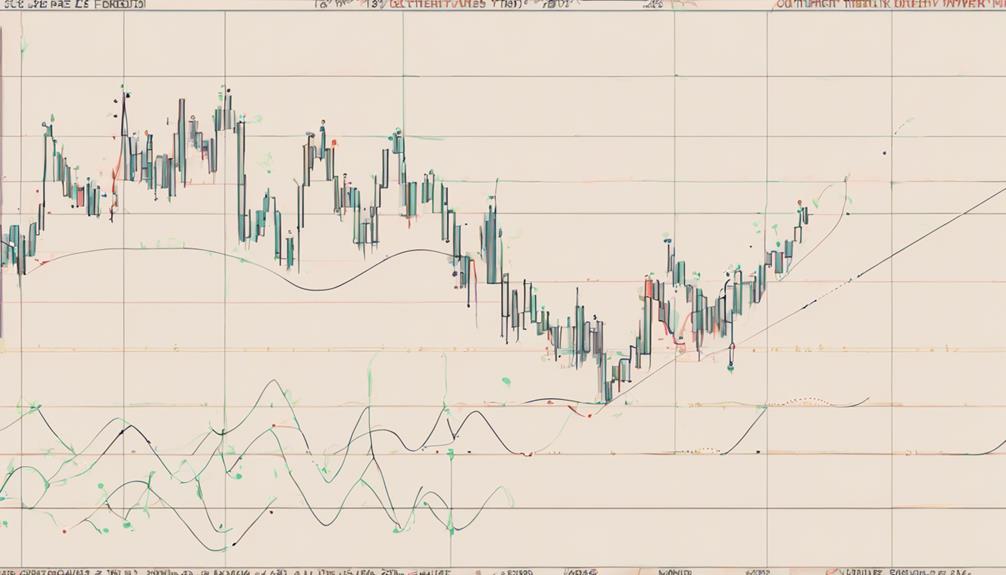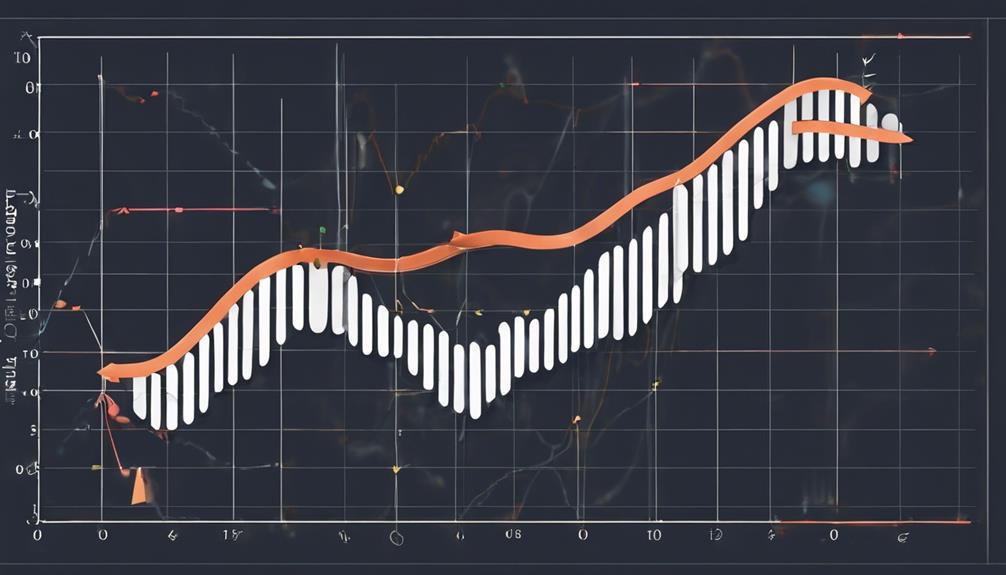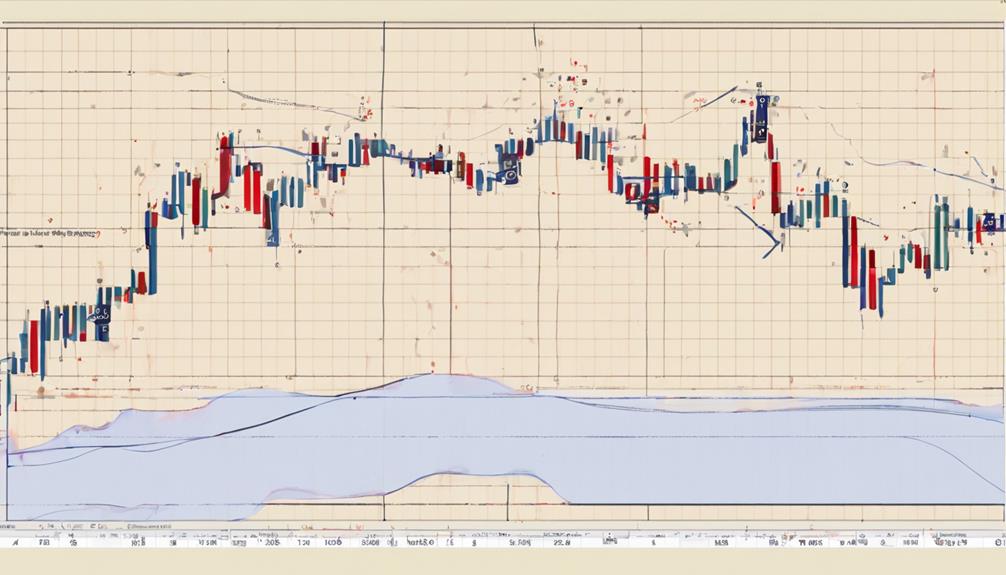Elliott Wave Theory's apparent simplicity stems from its systematic approach to dissecting market movements and pattern recognition. As one peels back the layers of this theory, a structured framework emerges, guiding analysts through the ebbs and flows of market sentiment with precision.
Yet, beneath this veneer of simplicity lies a depth of complexity waiting to be unearthed. To truly grasp the essence of why Elliott Wave Theory is perceived as straightforward, one must delve into its core principles and explore the intricacies that make it a staple in the toolkit of many traders and investors alike.
Historical Foundation and Basic Principles
Elliott Wave Theory, rooted in the observation of repetitive wave patterns in market movements, establishes a systematic framework for understanding financial market behavior. Developed by Ralph Nelson Elliott in the 1930s, this theory suggests that market cycles follow a wave pattern consisting of five waves in the direction of the main trend, followed by three corrective waves.
Robert Prechter, a prominent technical analyst, further popularized Elliott's work in the 1970s and 1980s, emphasizing the importance of wave structures and Fibonacci ratios in predicting market movements.
Prechter's contributions to wave theory have been instrumental in shaping the way traders and investors analyze market trends. By identifying specific rules and guidelines governing wave patterns within market cycles, Elliott Wave Theory offers a structured approach to interpreting price movements. The concept of Fibonacci ratios, a mathematical sequence prevalent in nature and financial markets, helps determine wave relationships and extensions, providing valuable insights into potential market turning points.
Understanding the historical foundation and basic principles of Elliott Wave Theory is essential for anyone looking to navigate the complexities of financial markets with a systematic and analytical approach.
Clear Wave Patterns and Structures

Building on the historical foundation and basic principles of Elliott Wave Theory, the current subtopic focuses on elucidating the clear wave patterns and structures that form the backbone of this analytical framework.
Within Elliott Wave Theory, the following aspects contribute to its simplicity and effectiveness:
- Impulsive waves: These are strong directional price moves in the direction of the prevailing trend, representing the main impulse of market movement.
- Corrective waves: These waves move against the trend of the impulsive waves, providing opportunities for market retracement and consolidation.
- Wave count guidelines: Each wave has specific rules governing its length and structure, aiding in the identification of potential entry and exit points.
- Market trend recognition: By understanding the repetitive nature of wave patterns, traders can apply Elliott Wave Theory to various market conditions, enhancing their ability to forecast future price movements accurately.
Objective Rules and Guidelines

With a focus on precision and objectivity, Elliott Wave Theory establishes a set of clear rules and guidelines for identifying wave patterns within financial markets. These guidelines are rooted in the principles of Dow Theory and technical analysis, providing traders with a structured approach to analyzing market movements. By defining specific wave counts and corrective patterns, Elliott Wave Theory simplifies the process of identifying and interpreting waves. Traders can rely on objective criteria such as wave characteristics and Fibonacci ratios to determine the most likely wave scenarios, reducing the impact of subjective biases in their analysis.
The objective rules and guidelines in Elliott Wave Theory serve to enhance the reliability of wave analysis by offering a systematic framework for wave interpretation. By adhering to these guidelines, traders can avoid common pitfalls associated with subjective interpretations and maintain a consistent approach to forecasting market trends. The clarity and specificity of the rules in Elliott Wave Theory contribute to its simplicity and usability, making it a valuable tool for traders seeking to navigate complex financial markets with confidence.
Subjective Interpretation and Flexibility

In applying Elliott Wave Theory to market analysis, the allowance for subjective interpretation and flexibility in wave counting becomes a pivotal aspect for individual analysts. This subjective element allows analysts to bring their expertise and judgment into the analysis process, enhancing the depth and accuracy of their market assessments. Here are some key points to consider:
- Analysts can use their discretion to identify wave structures and potential price movements, adding a personal touch to the analysis.
- The flexibility in wave counting permits adjustments and refinements, enabling analysts to adapt their strategies to different market conditions effectively.
- Subjective interpretation in Elliott Wave Theory empowers traders to navigate complex market dynamics by incorporating their insights into the wave analysis process.
- Varying wave counts and projections among analysts showcase the diverse perspectives and approaches in utilizing Elliott wave theory for market analysis.
Application and Practicality in Trading

The implementation of Elliott Wave Theory in trading strategies enhances traders' decision-making processes through its structured framework and clear wave patterns. By conducting wave analysis, traders can effectively pinpoint potential entry and exit points within the market. This approach simplifies market analysis by offering a systematic method to interpret price movements.
Moreover, Elliott Wave Theory enables traders to anticipate market cycles and trends, providing valuable insights for strategic decision-making. The theory's practicality becomes evident as traders utilize wave counts to establish risk management strategies with defined stop-loss levels, helping to protect their capital.
Is Elliott Wave Theory Suitable for Beginners as Well?
Yes, Elliott Wave Theory essentials are suitable for beginners as well. Understanding the basic principles and patterns of Elliott Wave Theory can provide a strong foundation for beginners to analyze market trends and make informed trading decisions. With proper knowledge and practice, beginners can effectively apply this theory in their trading strategies.
Frequently Asked Questions
What Is the Elliott Wave Theory in Simple Words?
Elliott Wave Theory is a technical analysis method that identifies repetitive wave patterns in financial markets. It suggests that market prices move in cycles of five upward waves followed by three corrective waves, aiming to forecast future price movements based on these patterns.
What Is the Logic Behind Elliott Wave Theory?
The logic behind Elliott Wave Theory lies in the belief that market movements are not random but follow recognizable patterns driven by investor psychology and sentiment. By identifying these patterns, traders can forecast future price movements.
How Accurate Is the Elliott Wave Theory?
The accuracy of Elliott Wave Theory can vary depending on individual interpretation, experience, and market conditions. While some traders find it effective in identifying market cycles and price movements, others question its reliability and consistency.
What Is the Wave Theory Simplified?
Elliott Wave Theory simplifies market analysis by categorizing price movements into identifiable wave patterns, distinguishing between impulsive and corrective waves. It provides guidelines on wave structure, relationships, and rules for easier market interpretation and prediction.
Conclusion
In conclusion, Elliott Wave Theory's historical foundation, clear wave patterns, objective rules, subjective interpretation, and practical application make it a simple yet powerful tool for analyzing market cycles and forecasting price movements.
Its structured approach and flexibility allow traders and investors to adapt to changing market conditions effectively, making it a valuable asset in technical analysis across various asset classes.
